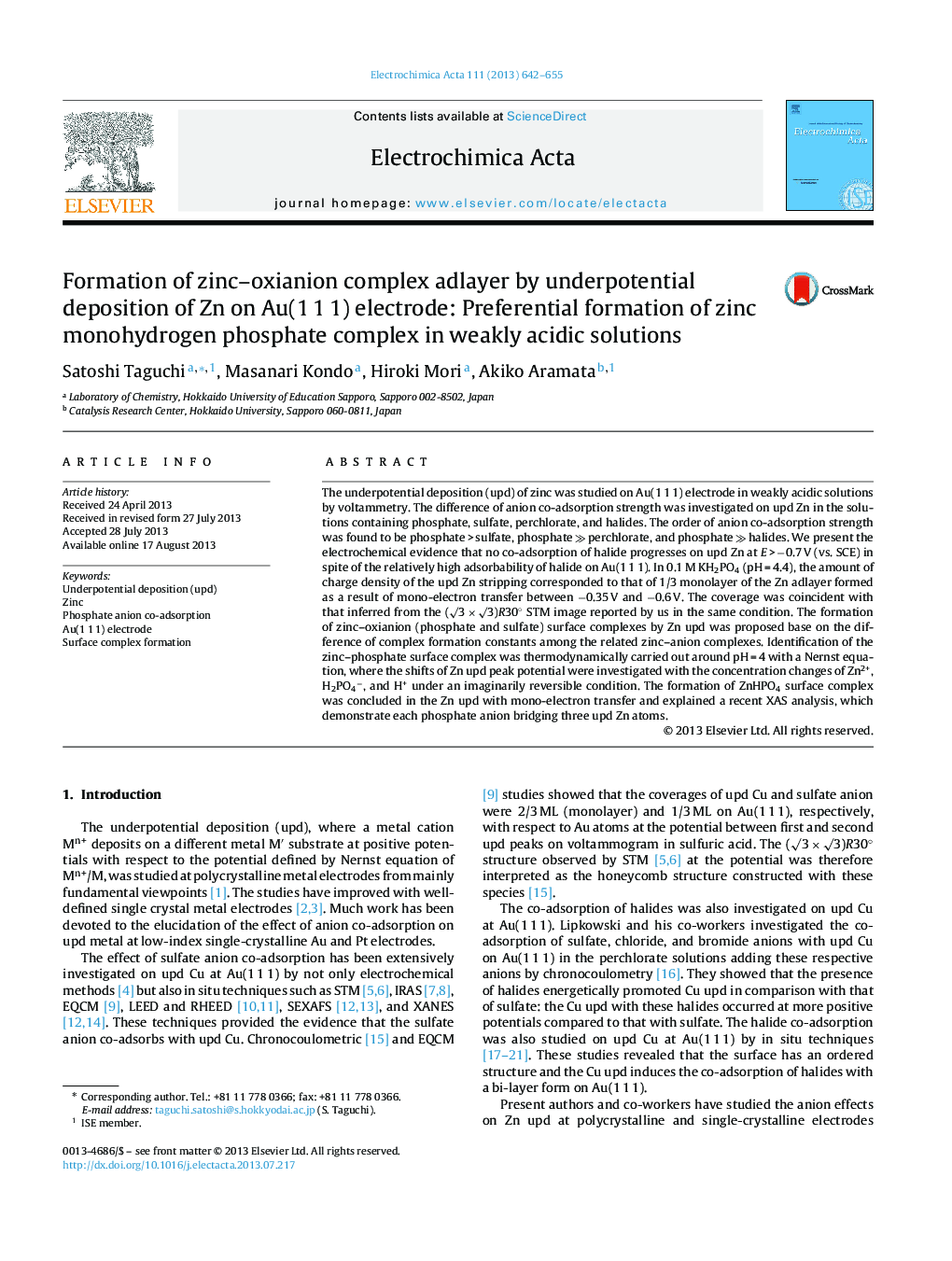| کد مقاله | کد نشریه | سال انتشار | مقاله انگلیسی | نسخه تمام متن |
|---|---|---|---|---|
| 186672 | 459619 | 2013 | 14 صفحه PDF | دانلود رایگان |

• Zn upd was studied on Au(1 1 1) electrode in weakly acidic solutions at pH ≃ 4.
• Anion co-adsorption with upd Zn was investigated with oxianions and halide anions.
• No co-adsorption of halide on upd Zn progressed in the solution with halide.
• Surface complex adlayer of zinc–phosphate was formed in Zn upd at pH ≃ 4.
• The surface complex was ZnHPO4 adsorbed with mono-electron transfer.
The underpotential deposition (upd) of zinc was studied on Au(1 1 1) electrode in weakly acidic solutions by voltammetry. The difference of anion co-adsorption strength was investigated on upd Zn in the solutions containing phosphate, sulfate, perchlorate, and halides. The order of anion co-adsorption strength was found to be phosphate > sulfate, phosphate ≫ perchlorate, and phosphate ≫ halides. We present the electrochemical evidence that no co-adsorption of halide progresses on upd Zn at E > −0.7 V (vs. SCE) in spite of the relatively high adsorbability of halide on Au(1 1 1). In 0.1 M KH2PO4 (pH = 4.4), the amount of charge density of the upd Zn stripping corresponded to that of 1/3 monolayer of the Zn adlayer formed as a result of mono-electron transfer between −0.35 V and −0.6 V. The coverage was coincident with that inferred from the (√3 × √3)R30° STM image reported by us in the same condition. The formation of zinc–oxianion (phosphate and sulfate) surface complexes by Zn upd was proposed base on the difference of complex formation constants among the related zinc–anion complexes. Identification of the zinc–phosphate surface complex was thermodynamically carried out around pH = 4 with a Nernst equation, where the shifts of Zn upd peak potential were investigated with the concentration changes of Zn2+, H2PO4−, and H+ under an imaginarily reversible condition. The formation of ZnHPO4 surface complex was concluded in the Zn upd with mono-electron transfer and explained a recent XAS analysis, which demonstrate each phosphate anion bridging three upd Zn atoms.
Journal: Electrochimica Acta - Volume 111, 30 November 2013, Pages 642–655